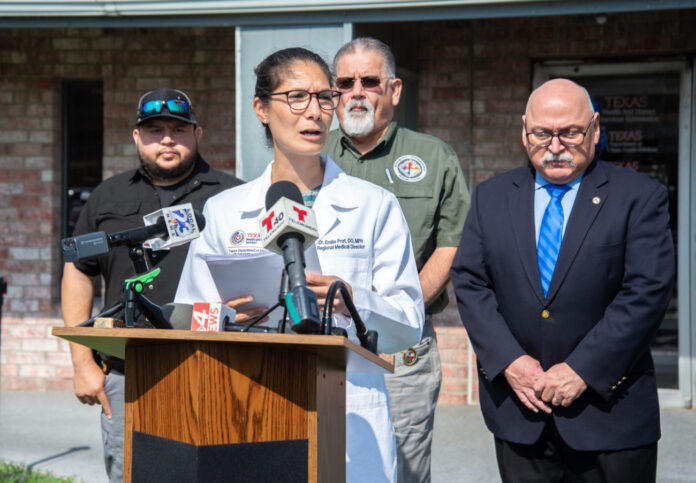If you’ve tested positive for COVID-19, how do you know whether you should go to the hospital or not?
That’s a determination that people who’ve been infected will need to be able to make, especially with the rapid rise in COVID-19 hospitalizations.
The answer about whether to go to the hospital largely hinges on whether you have trouble breathing, according to Dr. Emilie Prot, regional medical director for the Department of State Health Services’ Region 11.
“For example, if you’re in your room and you need to walk to the bathroom or you’re on your couch and you need to walk to the kitchen — those simple short distances — if they fatigue you and you feel very tired, that’s when you need to go to the hospital,” Prot said. “Otherwise, you’re able to recover and get through your isolation period at home.”
She stressed that health officials do want people to stay home if they’re sick and not go to the hospital if it’s just to get tested.
“If you know people that have had COVID, there’s testing around the area where you could go through a drive-thru,” she said, “so we really recommend that you go through the drive-thru and only go to the hospital if you’re very sick.”
If an individual has access to a pulse oximeter, a device that measures the saturation of oxygen in the red blood cells, Prot said that would be useful in determining whether a visit to the hospital is necessary.
If levels remain above 95%, Prot said that was a good sign that hospitalization was not necessary.
“Continue to walk throughout the house, continue to do deep breathing exercises,” Prot advised.
While local hospitals have not reached full saturation, the number of COVID-19 cases has increased exponentially over the last few weeks.
In the Rio Grande Valley, the total patient census was 2,250, according to Alberto Perez, an incident commander with DSHS.
Of those, 458 patients were confirmed to be positive for COVID-19 and 191 were suspected to be positive for the disease.
Perez added that within the previous 24 hours, 514 COVID-19 positive individuals had presented to an emergency room and 23 positive patients had been admitted to an intensive care unit.
For the entirety of Region 11, there were 7,955 confirmed cases as of Friday morning. That’s a jump from the 4,695 total cases that DSHS had reported last week.
Later that day, Hidalgo County reported two more coronavirus-related deaths — those of McAllen men in their 70s with underlying medical conditions — and 179 new cases.
The new cases brought their total to 2,892. Of those, 1,918 cases are active.
The county also reported 212 COVID-19 hospitalizations and that 19 of those patients were in an intensive care unit.
Cameron County also reported two deaths Friday, those of two Brownsville men — a 75-year old and a 63-year-old resident of The Rio at Fox Hollow nursing home.
County health officials also reported an additional 113 COVID-19 cases consisting of patients that ranged in age from 3 to 92 years old.
Their total number of coronavirus cases is now at 2,085 and, of those, 802 are active.
In Starr County, an additional 58 cases of COVID-19 were reported on Friday, bringing the total number of cases there to 541 — 414 of those being active.
Officially, Starr County has reported three deaths there related to the coronavirus; however, there are two more that are pending residential confirmation before they are included in the official count, according to Dr. Jose Vazquez, the county’s health authority.
Vazquez confirmed that two COVID-19 patients were in the hospital and one was in the emergency room.
A Raymondville city commissioner confirmed another four more cases in Willacy County on Friday, bringing its total to 129.
The new positive cases were of a man and a woman in their 30s, a man in his 40s, and a man in his 20s.
The city commissioner was citing a county news release that was not made available to The Monitor and was not found on the county’s website nor their social media pages.
“The majority recover and that is very good news,” Prot said. “However, we’ve seen in this past week our hospitals are getting a surge of patients coming in and those are the unstable patients that are coming in.”
As hospitals extend their capacity, health officials this week expressed concern over the possibility of experiencing staffing shortages — particularly when it comes to nurses.
“So what we do need to make sure is that we continue to offer these services,” Prot said, “so that’s why I’m urging people to really recognize the symptoms and know if they need to go to the hospital or not.”




